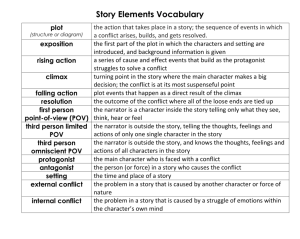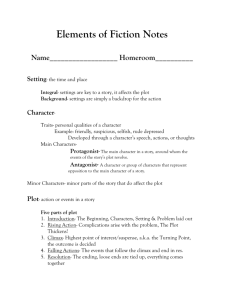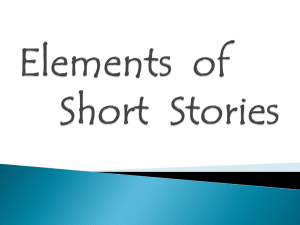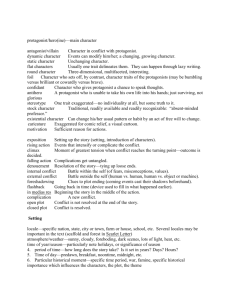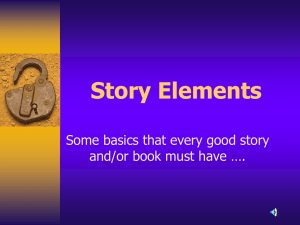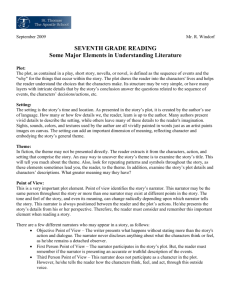For Friday, read the following three stories, which can be found
advertisement
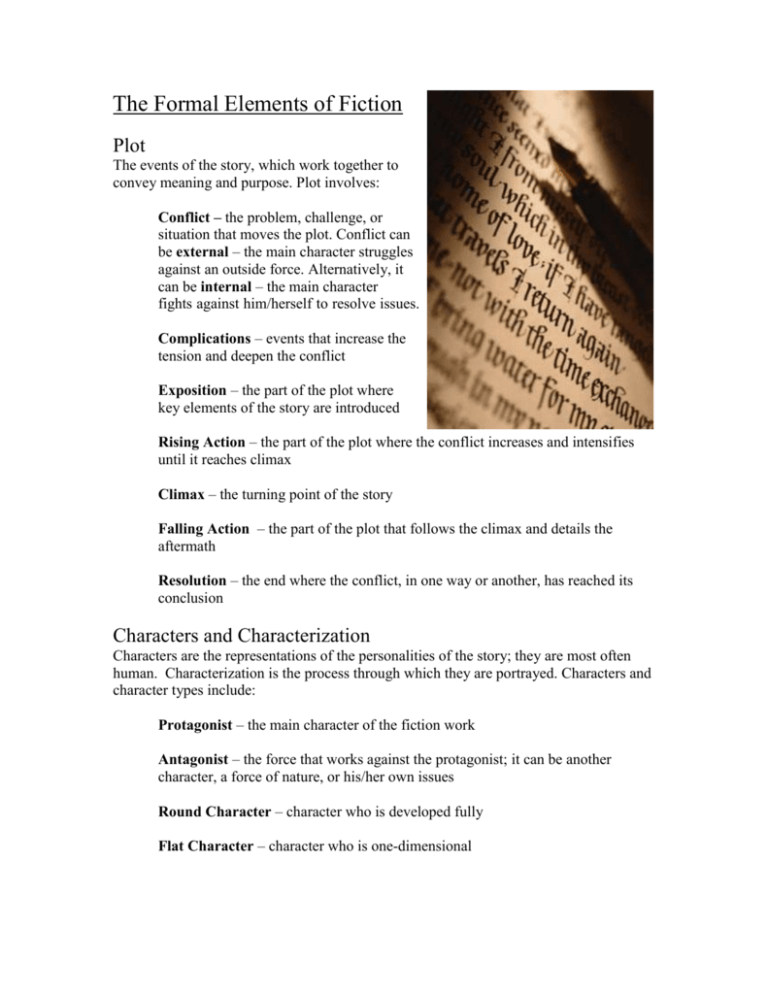
The Formal Elements of Fiction Plot The events of the story, which work together to convey meaning and purpose. Plot involves: Conflict – the problem, challenge, or situation that moves the plot. Conflict can be external – the main character struggles against an outside force. Alternatively, it can be internal – the main character fights against him/herself to resolve issues. Complications – events that increase the tension and deepen the conflict Exposition – the part of the plot where key elements of the story are introduced Rising Action – the part of the plot where the conflict increases and intensifies until it reaches climax Climax – the turning point of the story Falling Action – the part of the plot that follows the climax and details the aftermath Resolution – the end where the conflict, in one way or another, has reached its conclusion Characters and Characterization Characters are the representations of the personalities of the story; they are most often human. Characterization is the process through which they are portrayed. Characters and character types include: Protagonist – the main character of the fiction work Antagonist – the force that works against the protagonist; it can be another character, a force of nature, or his/her own issues Round Character – character who is developed fully Flat Character – character who is one-dimensional Dynamic Character – character who changes Static Character – character who remains the same Setting At its most basic level, setting is the place and time period of the story. Setting also includes: Social Context – the social and cultural problems that affect both the plot and/or the writer Mood/Atmosphere – the “vibe” or underlying feeling that a story produces Point of View The perspective of the narrator. Different types of view include: First Person – the narrator is part of the story Second Person – the narrator tells it from your point of view (very unusual) Third Person Limited (aka Third Person Sympathetic) – the narrator is not part of the story, but gives us the point of view of just one person Third Person Omniscient –the narrator is not a part of the story, but knows everyone’s thoughts and everything that happens Third Person Objective (aka Third Person Dramatic) – the narrator is not a part of the story, but relates the facts without any access to interior thoughts Style and Tone The tone of the story is the writer’s attitude towards his/her readers and subject. Style is the way the writer expresses him or herself using language choice, sentence structure, and diction. These work together to form the story’s perspective. Imagery, Symbolism, and Allegory Imagery occurs when a “sensory impression” is used to convey meaning. This is usually a visual image, but it can target the other senses, too. Imagery that occurs multiple times and carries more complex meaning becomes symbolism. Symbols are often derived from social context; some symbols are universal. When everything in the story is a symbol that parallels something outside the story, the work becomes an allegory. Theme The theme is the main meaning or message the author is trying to convey. Themes are not always clear cut; much relies on the interpretation of the reader. For Friday: If you have The Norton Anthology, read pages 3-17. If not, read the following three stories, which can be found online at these links: Spencer Holst’s “The Zebra Storyteller” http://www.archipelago.org/vol3-1/holst.htm Elizabeth Tallent’s “No One’s a Mystery” http://www.wiu.edu/users/mudjj4/gh101/story.htm Guy de Maupassant’s “The Jewelry” aka “The False Gems” http://www.online-literature.com/maupassant/212/
